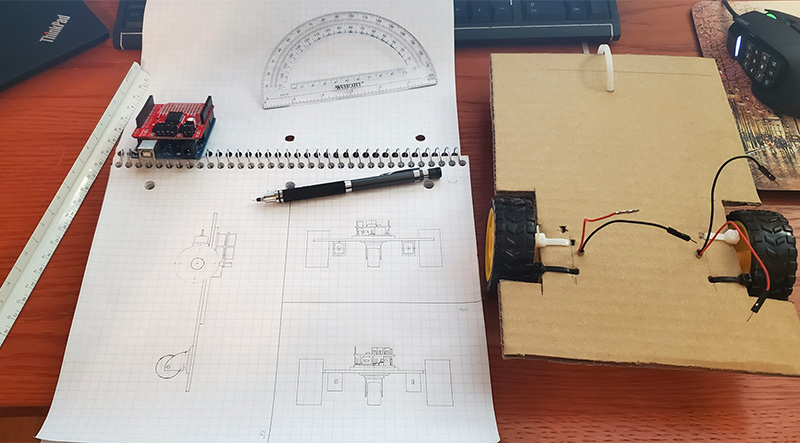The first year of a Drexel engineering major’s college journey isn’t an easy one. There’s a lot to adjust to—leaving home for the first time, living in a new environment, making a whole new set of friends, calculus and physics—and the ENGR three-term sequence of courses that is typically the first real exposure students get into what being an engineer is really like. It is designed to tie theory to practice and provide a taste of the engineering disciplines.

When this academic year started, no one could foresee the upending of the first-year experience to end up back at home to learn. Likewise, Patrick Gurian, PhD, Associate Professor and Director of First Year Experience, didn’t design the courses to be delivered virtually—actually quite the opposite. The courses emphasize the practical implications of theory, and in many cases are designed to include hands-on activities. Dramatically changing the course on short notice was difficult. Faculty and students have been working together to develop approaches and capture the essential components of the class, even as the setting and tools have changed.
“In one section, the original project is to design a sensor that tracks moisture in order to water plants. They design a feedback loop, which is a typical task for electrical and computer engineers. We had to give up on using a plant when going virtual. We didn’t want the plants to die.” Instead, at the end of winter term, knowing that remote learning was coming, lab manager Brad Eshelman was able to order enough supplies for a revised project that students were able to pick up before leaving campus. One member of each team has the kit, and they work together online to build the “brains” of the watering system, even though it is not possible to include the valve and actual plant in the set up for remote learning.
In Brandon Terranova, PhD’s section, it was also possible to provide students with take home kits. Students are building a robotically controlled animatronic puppet with an entertainment focus. Using their supplied materials and equipment and sourcing their own from home, they are to create a working device with multiple actuators, lights, and aesthetic features to replicate characters such as BB-8 from Star Wars, the Cheshire Cat from Alice in Wonderland, or Spongebob Squarepants.

Learning about cement through the design of a floating bread boat.
Chemical and biological engineering faculty member Michael Walters, PhD, is teaching a section exploring the chemical engineering of coffee. The kits include coffee and grinders for students to analyze pH levels and conductivity, and then build and optimize a process to extract coffee. Normally another section of the class builds miniature concrete canoes. Instructor Grace Hsuan, PhD, planned ahead and switched materials from concrete to dough. Students perform experiments to apply the concepts of buoyancy by testing if their bread boats float in their kitchens or bathrooms.
To provide insight into advanced manufacturing techniques, Antonios Kontsos, PhD, who is on Drexel’s campus as essential personnel, will 3D print student prototype designs created in computer-aided design (CAD) software done by the students this term at home. He’ll print them in week seven and show them to the students so they can see the tangible outcome of their designs.
Gurian went on, “In my section, we are using a real application for mathematical modeling of Drexel buildings, looking at retrofits, and how we could significantly reduce greenhouse gas emissions by 50%, 80%, or even 100%. Thanks to Nick Haas, Drexel University’s engineer, we’ve got plans and utility bills from six actual Drexel buildings. While we will not be ripping apart any of Drexel’s buildings this term, it's very real, in that this is what an architectural engineer would do as a preliminary study to reduce greenhouse gas emissions.”
While a virtual environment isn’t what was intended for the courses, there is a depth and variety of projects that are able to replicate an engineer’s process in all of the represented disciplines. Bringing the courses online has also required bringing some new types of engagement. “I would say that it's got to be a shared responsibility, to make this work, there's a lot that the faculty are doing, but there are students who are also helping. In one of my lab sections, I had the leaders of our student organizations come to the class virtually and talk about what they do. It was really well received. It’s all hands on deck—if we think that way, I think we can really achieve our educational outcomes.”